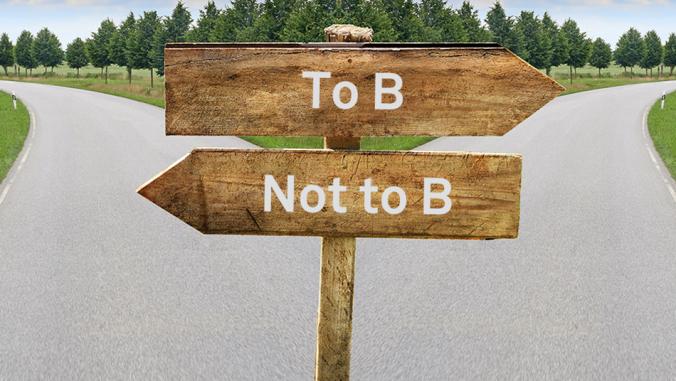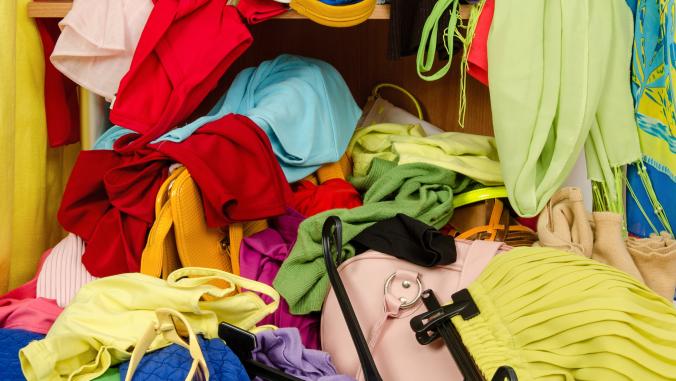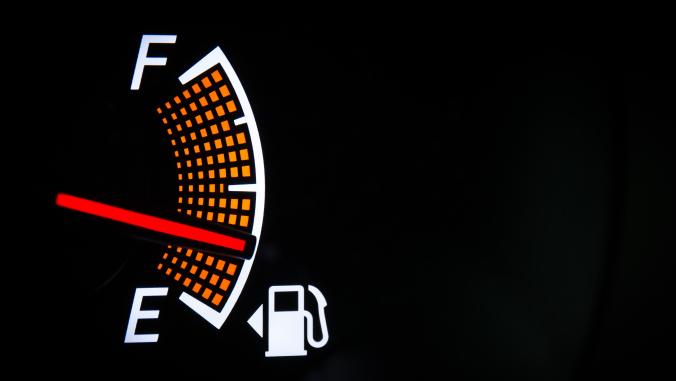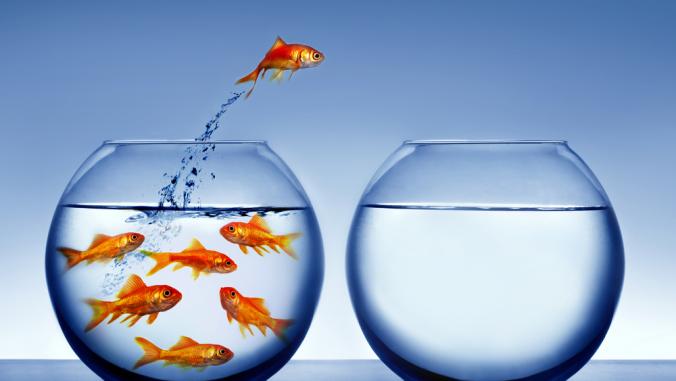The Bigger Picture Behind Apple's China Problem
<p>The major problems uncovered in Apple's -- and the IT industry's -- Chinese supply chain in a series of recent exposes go far beyond Apple to the heart of how companies measure their social and environmental impacts.</p>

More than a decade after the Nike scandals of the late 1990s exposed terrible working conditions in the Asian factories where most of our stuff is made, has anything changed? To be sure, in the years since, most U.S. brands -- not just footwear and apparel companies like Nike, Timberland and Gap, but corporate giants like GE and Walmart -- have assumed responsibility for human rights and environmental problems throughout their supply chains. But are conditions any better for the workers?
Those questions are front-page news these days, literally, in The New York Times, which has published two long and extraordinary stories about Apple and its supply chain in China. [See How the U.S. Lost Out on iPhone Work and especially In China, Human Costs are built into an IPad.]
The Apple-in-China story is also brought to life by Mr. Daisey and the Apple Factory, a lively, provocative episode of public radio's This American Life, in which an actor-turned-reporter named Mike Daisey investigates conditions at a Foxconn factory in Shenzhen. Together this reporting paints a shameful picture of harsh and unsafe working conditions at Apple suppliers: sometimes deadly safety issues, chemicals that scar people's hands, 60-hour weeks, long stretches of work with no breaks, a rash of worker suicides, etc.
To get some perspective, I spoke with Dan Viederman, the executive director of Verite, a nonprofit that helps companies build more humane and sustainable supply chains, and I've been reading my friend Adam Lashinsky's excellent new book, Inside Apple.
 For starters, let's be clear: This is not an Apple problem. The focus of both The Times' reporting and Mike Daisey's story is Foxconn, which is said to be China's biggest private employer and may be the world's largest manufacturing company. It employs 1.2 million people (!) and assembles an estimated 40 percent of the world's consumer electronics, for customers including Amazon, Dell, Hewlett-Packard, Nintendo, Nokia and Samsung, according to The Times.
For starters, let's be clear: This is not an Apple problem. The focus of both The Times' reporting and Mike Daisey's story is Foxconn, which is said to be China's biggest private employer and may be the world's largest manufacturing company. It employs 1.2 million people (!) and assembles an estimated 40 percent of the world's consumer electronics, for customers including Amazon, Dell, Hewlett-Packard, Nintendo, Nokia and Samsung, according to The Times.
Part of a company called Hon Hai that is headquartered in Taiwan, Foxconn operates not just in Asia, but in the Czech Republic, Mexico and Brazil. It publishes a corporate social responsibility report and has U.S.-based employees in Houston and Austin, Texas. Most Americans, of course, have never heard of Foxconn although they probably own something that was made by the company.
Nor is the problem of harsh, unsafe working conditions limited to Foxconn or even the electronics industry. Problems abound in the apparel and toy industries, too, as well as in mining, farming, fishing and construction. [See Walmart: A Bully Benefactor at Fortune.com for my story about Walmart's work to prevent child labor on cotton farms in Uzbekistan].
Last summer, Nike admitted that "nearly two-thirds of the 168 factories making Converse products fail to meet Nike's standards for contract manufacturers," according to this story by Good Guide's Dara O'Rourke, who as a graduate student working in Vietnam in 1997 turned a spotlight on Nike's use of child labor. In its most recent corporate-responsibility report, Gap says that between 10 and 25 percent of its suppliers in south China don't comply with child labor laws, don't pay overtime as required and don't provide one day off each week.
I turned to Gap's report not because they are a laggard but because, to their credit, they are a leader when it comes to being open about where their factory monitoring efforts are falling short. Other companies don't say nearly as much about where their stuff is made, or how. The factories themselves are often walled off from NGOs and journalists.
The result is that, for better or worse, most of our stuff is made in faraway places by people who are invisible to us. Can you find Shenzhen, a city of 14 million people (bigger than New York!) and the world's manufacturing hub, on a map?
 As best as I can tell, Apple is no worse than most other companies when it comes to protecting the rights of workers in its factories. It may be better. In its sixth annual Supplier Responsibility Report released last month, Apple disclosed the names of its suppliers for the first time -- but not the location of their factories.
As best as I can tell, Apple is no worse than most other companies when it comes to protecting the rights of workers in its factories. It may be better. In its sixth annual Supplier Responsibility Report released last month, Apple disclosed the names of its suppliers for the first time -- but not the location of their factories.
The company also became the first electronics firm to join the Fair Labor Association, a nonprofit group that works to improve conditions for workers. (Its other clients include Nike.) In an email to employees, Apple's CEO Tim Cook wrote: "The FLA's auditing team will have direct access to our supply chain and they will report their findings independently on their website." They don't, however, tie violations to particular factories.
In its report, Apple also said that it
dedicated additional resources to protecting the rights of workers who move from their home country to work in factories in another country. Many of these immigrants are charged exorbitant fees that drive them into debt, an industrywide problem that Apple discovered in 2008 and that we classify as involuntary labor. In 2010, we continued our search for these violations, auditing all of our production suppliers in Taiwan and many in Malaysia and Singapore. As a result of Apple's audits and rigorous standards, foreign workers have been reimbursed $3.4 million in recruitment fee overcharges since 2008.
This is significant because it's a rare example of a U.S. brand putting money in the pockets of overseas workers. "On the migrant labor issue, Apple is absolutely a leader," says Dan Viederman of Verite.
Others see Apple differently. A consultant for BSR (also know as Business for Social Responsibility) who declined to be identified told The Times that Apple refused to push Foxconn to try out a program where workers could have access to private "hotlines" to report abusive conditions.
The more fundamental problem is that Apple's reporting doesn't tell you much about what impact the company is having. Cook's email, for example, says that Apple's
Supplier Responsibility team led more than 200 audits at facilities throughout our supply chain last year. These audits make sure [emphasis added] that working conditions are safe and just.
But othey don't. Suppliers are notorious for faking pay records and gaming the inspectors. And Apple's track record makes clear that conditions are not safe and just.
Cook also boasts that Apple offers free continuing education programs at factories in China, saying that "more than 60,000 workers have enrolled in classes to learn business, entrepreneurial skills or English." But are they earning more money? Working fewer hours? Safer?
 See the problem here? Apple and other companies are measuring their actions, and not their impact. There's a big difference between the two. It's reason why we don't know whether the people who make the iPad are better or worse off than those who make an HP printer or a Microsoft XBox.
See the problem here? Apple and other companies are measuring their actions, and not their impact. There's a big difference between the two. It's reason why we don't know whether the people who make the iPad are better or worse off than those who make an HP printer or a Microsoft XBox.
"Companies report on their activities -- audits conducted, training delivered -- but don't tell us what impact that effort has achieved for workers," Dan says. "As a result, while companies are getting better at reporting on their activities, we don't have a meaningful way to compare one company to another." We'd know more if companies reported on the wages that workers are paid, the number of workplace injuries, turnover rates, environmental discharges and the like.
Those who follow these issues also tell me that workplace issues are not part of procurement at most companies. If suppliers had to demonstrate that they provide ethical workplaces as a condition of doing business with a big U.S. brand, companies might avoid embarrassment -- and more important, make a difference in the lives of their workers.
 Having said that, it's worth remembering that globalization and the manufacturing jobs it has brought to Shenzhen have on balance been good for China and its people. Workers line up for jobs at Foxconn, as the Atlantic reported last week. No less a crusader for the rights of the global poor than Nicholas Kristof has said as much, most famously in a 2000 Times Magazine article called Two Cheers for Sweatshops.
Having said that, it's worth remembering that globalization and the manufacturing jobs it has brought to Shenzhen have on balance been good for China and its people. Workers line up for jobs at Foxconn, as the Atlantic reported last week. No less a crusader for the rights of the global poor than Nicholas Kristof has said as much, most famously in a 2000 Times Magazine article called Two Cheers for Sweatshops.
More recently, Kristof, who lived in China, told This American Life that industrialization has
created massive employment opportunities, especially for young women, who frankly didn't have a lot of alternatives. That tended to give women more clout within families, within the community ... for many Chinese, the grimness of factories like Foxconn was better than the grimness of rice paddies.
If you'd prefer the opinion of a Nobel Prize-winning economist, here's Paul Krugman, writing in Slate, back in 1997:
While fat-cat capitalists might benefit from globalization, the biggest beneficiaries are, yes, Third World workers.
It is not an edifying spectacle, but no matter how base the motives of those involved, the result has been to move hundreds of millions of people from abject poverty to something still awful, but nonetheless significantly better.
What's more, competition for workers -- and the very beginnings of a labor movement -- has also begun to improve conditions in China's factories. To retain workers, owners are said to be improving wages, working conditions and living conditions, albeit slowly.
But still.
My MacBookPro costs $1299. My iPad2 retails for $499. I don't even know how much my iPhone costs, and I don't want to think about how many iPods, Nanos or shuffles I've bought for my family over the years. By selling premium-priced products and generating high margins, Apple was the U.S.'s most valuable company -- worth more than ExxonMobil, Microsoft and IBM, last time I checked. It's holding $97 billion in cash and short-term securities.
Simple fairness dictates that more of that wealth should be shared with the workers in China who are making Apple products.





